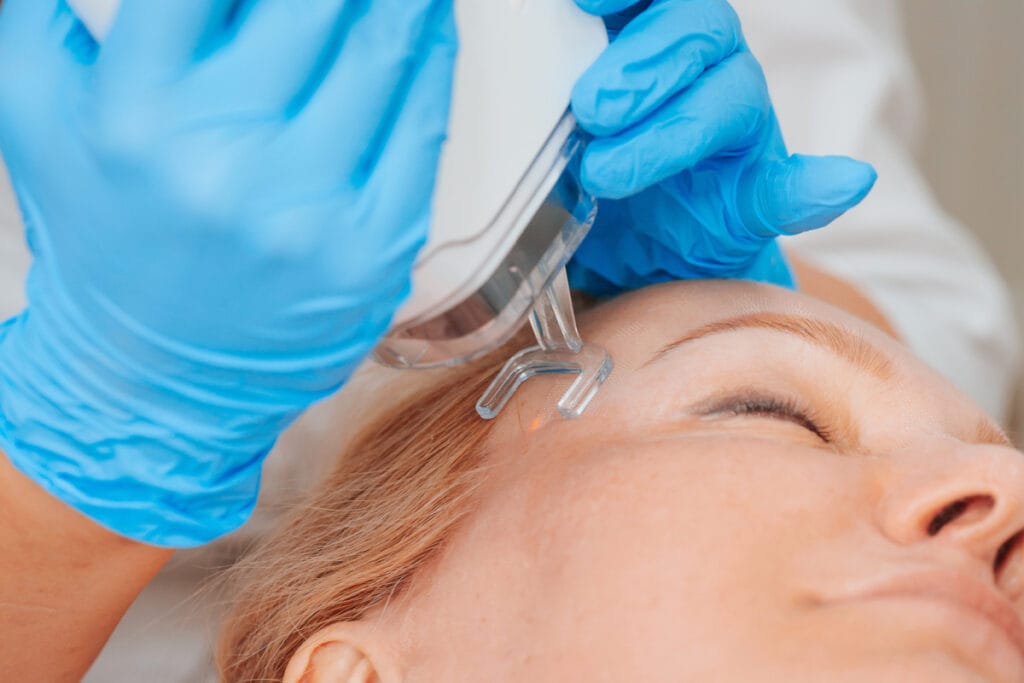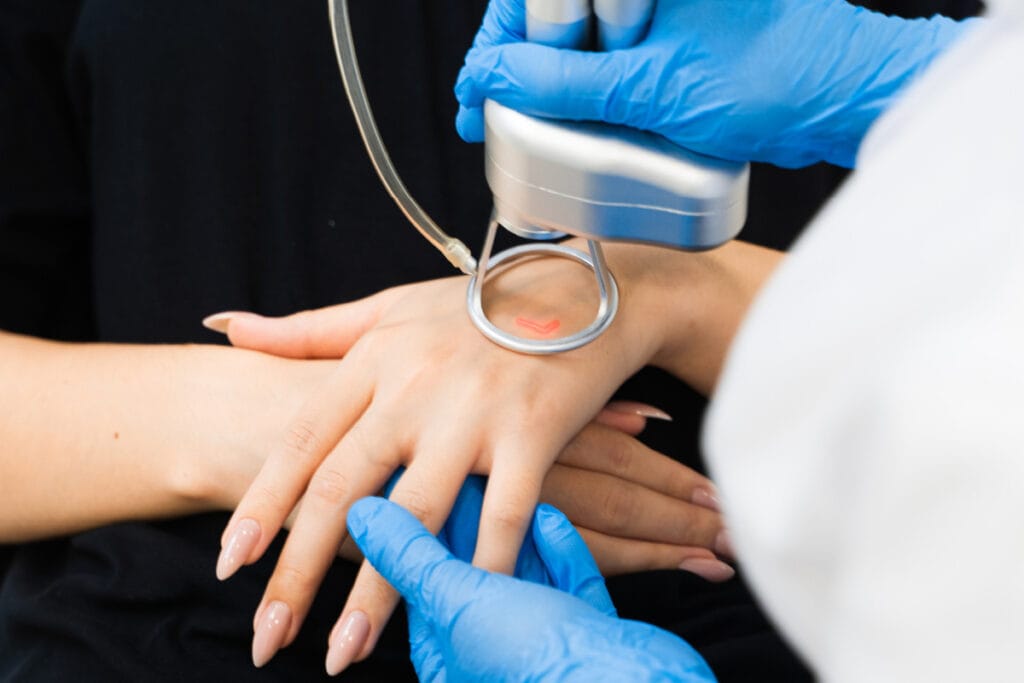CO2 Laser Treatments: What to Expect
| ABCS
CO₂ laser skin resurfacing is one of the most powerful and scientifically backed skin resurfacing technologies cosmetic surgeons have for reversing visible signs of aging. Below, we explain how the procedure works, who it best serves, and the recovery steps that will help you achieve the safest, most enduring results.
How CO₂ Laser Resurfacing Rejuvenates Skin
CO₂ (carbon dioxide) lasers emit a wavelength that is strongly absorbed by water—the primary component of living tissue. Treatment can be delivered in a fractional pattern, where only a grid of tiny micro-columns is treated, sparing surrounding tissue for quicker healing, or as a non-fractional (full-field) pass that removes the entire surface layer for deeper, more dramatic rejuvenation at the cost of a longer recovery.
This controlled injury triggers several healing responses: old collagen fibers are replaced, new elastin is formed, and fresh epidermal cells rise to the surface to rejuvenate the health and appearance of treated areas.
CO₂ laser skin resurfacing is ideal for achieving a visibly smoother texture, more even tone, and a noticeably firmer complexion.
Who Can Benefit—and Who Should Wait
Patients bothered by static wrinkles, etched-in lines around the eyes or mouth, sun damage, rough skin texture, or acne scarring tend to see the most dramatic improvement from CO₂ laser skin treatments. Because CO₂ lasers are ablative (they remove tissue), cosmetic surgeons are careful to screen for factors that increase complication risk, such as active acne, certain medications, connective-tissue disorders, or a history of poor wound healing.
Individuals with deeper skin tones are not excluded, but your cosmetic surgeon may recommend a gentler fractional pattern or alternative treatments to avoid post-inflammatory hyperpigmentation (PIH).
Related: Recommendations from Cosmetic Surgeons About Lasers for People of Color
Procedure Overview
Treatment protocols vary by provider and device; however, patients can generally expect the following:
- 1. Pre-treatment preparation: A gentle cleanser or lightening cream (and sometimes topical antivirals) may be started a few days beforehand to keep the skin calm and clear.
- 2. Numbing and safety: On treatment day, the area is numbed (and, if needed, a mild sedative) to maintain comfort; protective eye shields are placed before the laser begins.
- 3. Laser application: The handpiece moves methodically across the skin, producing a warm, tingling sensation and a soft snapping sound; a full-face pass typically takes about 20-30 minutes.
- 4. Immediate after-care: The skin is cooled with a soothing rinse and coated with a thick healing ointment, and clear after-care instructions are provided before discharge.
Recovery After CO₂ Laser Treatment: The First 7 to 10 Days
Expect redness, pinpoint oozing, and a “bronzed” appearance as the treated layer dries and sheds. Most patients feel ready to resume video calls by day five and can return to in-office work, with makeup, by the end of week one. Pinkness may linger for several weeks; diligent sun protection is essential during this phase to avoid post-inflammatory hyperpigmentation.
Long-Term Results You Can Expect From CO₂ Laser Treatments
An appropriately aggressive CO₂ resurfacing session can erase years of accumulated damage and stimulate collagen remodeling for up to six months post-procedure. Patients typically report:
- Softer fine lines and markedly smoother texture
- Tighter skin along the lower cheeks and jawline
- Diminished pore visibility and pigmentation irregularities
- A clearer, brighter overall complexion
These results typically endure for years when paired with proper skincare and sun avoidance.

Your Post-Treatment Care Checklist
Your cosmetic surgeon will provide a detailed, individualized after-care plan based on laser settings, skin type, and treatment area. In most cases, however, the following guidelines apply:
- Cool and cleanse – Saline compresses every few hours for the first 48–72 hours help draw out heat, remove debris, and ease discomfort.
- Maintain an occlusive barrier – Keep freshly treated skin continuously covered with petrolatum or a silicone-based ointment until peeling is complete to prevent crusting and support re-epithelialization.
- Practice strict sun protection – Once new skin has formed, apply a broad-spectrum mineral SPF 30 or higher every morning and wear a wide-brimmed hat; ultraviolet exposure can trigger unwanted pigmentation for several months.
- Avoid potential irritants – Delay retinoids, exfoliating acids, and fragrance-laden products until your provider confirms it is safe to resume them.
- Schedule follow-up visits – Routine check-ins allow early identification of concerns and open the door to maintenance options such as medical-grade skincare or lighter fractional laser sessions.
Related: Laser Skin Resurfacing: Top 8 Things You Need to Know
Choosing an Expert Laser Provider is Essential
CO₂ lasers are powerful tools that demand precise control of depth and density. Treatments should be customized to each patient’s anatomy to achieve optimal results without compromising skin health or well-being. Many board certified cosmetic surgeons perform laser skin treatments themselves or personally oversee trained medical aesthetic providers in their practice to ensure the highest standards of patient safety and outcomes.
If you’re ready to explore CO₂ laser skin resurfacing—or to confirm whether another modality better suits your goals—we invite you to consult a surgeon certified by the American Board of Cosmetic Surgery. Find a surgeon near you through our directory.